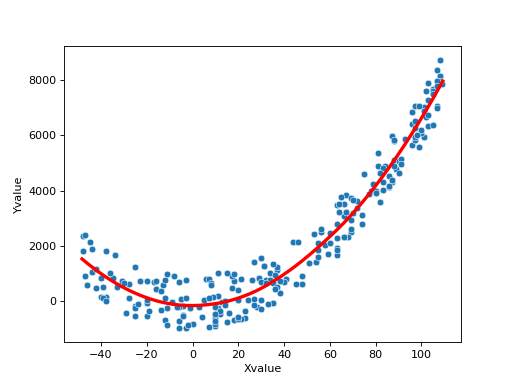Various Statistical Tools#
Autoprot Analysis Functions.
@author: Wignand, Julian, Johannes
@documentation: Julian
- autoprot.analysis.stats.edm(matrix_a, matrix_b)[source]#
Calculate an euclidean distance matrix between two matrices.
See: https://medium.com/swlh/euclidean-distance-matrix-4c3e1378d87f
- Parameters:
matrix_a (np.ndarray) – Matrix 1.
matrix_b (np.ndarray) – Matrix 2.
- Returns:
Distance matrix.
- Return type:
np.ndarray
- autoprot.analysis.stats.loess(data, xvals, yvals, alpha, poly_degree=2)[source]#
Calculate a LOcally-Weighted Scatterplot Smoothing Fit.
See: https://medium.com/@langen.mu/creating-powerfull-lowess-graphs-in-python-e0ea7a30b17a
- Parameters:
data (pd.Dataframe) – Input dataframe.
xvals (str) – Colname of x values.
yvals (str) – Colname of y values.
alpha (float) – Sensitivity of the estimation. Controls how much of the total number of values is used during weighing. 0 <= alpha <= 1.
poly_degree (int, optional) – Degree of the fitted polynomial. The default is 2.
- Return type:
None.
Notes
Loess normalisation (also referred to as Savitzky-Golay filter) locally approximates the data around every point using low-order functions and giving less weight to distant data points.
Examples
>>> np.random.seed(10) >>> x_values = np.random.randint(-50,110,size=250) >>> y_values = np.square(x_values)/1.5 + np.random.randint(-1000,1000, size=len(x_values)) >>> df = pd.DataFrame({"Xvalue" : x_values, "Yvalue" : y_values })
>>> evalDF = autoprot.analysis.loess(df, "Xvalue", "Yvalue", alpha=0.7, poly_degree=2) >>> fig, ax = plt.subplots(1,1) >>> sns.scatterplot(df["Xvalue"], df["Yvalue"], ax=ax) >>> ax.plot(eval_df['v'], eval_df['g'], color='red', linewidth= 3, label="Test")
import autoprot.analysis as ana import seaborn as sns x_values = np.random.randint(-50,110,size=(250)) y_values = np.square(x_values)/1.5 + np.random.randint(-1000,1000, size=len(x_values)) df = pd.DataFrame({"Xvalue" : x_values, "Yvalue" : y_values }) evalDF = ana.loess(df, "Xvalue", "Yvalue", alpha=0.7, poly_degree=2) fig, ax = plt.subplots(1,1) sns.scatterplot(x=df["Xvalue"], y=df["Yvalue"], ax=ax) ax.plot(evalDF['v'], evalDF['g'], color='red', linewidth= 3, label="Test") plt.show()
(
Source code,png,hires.png,pdf)
- autoprot.analysis.stats.make_psm(seq, seq_len)[source]#
Generate a position score matrix for a set of sequences.
Returns the percentage of each amino acid for each position that can be further normalized using a PSM of unrelated/background sequences.
- Parameters:
seq (list of str) – list of sequences.
seq_len (int) – Length of the peptide sequences. Must match to the list provided.
- Returns:
Dataframe holding the prevalence for every amino acid per position in the input sequences.
- Return type:
pd.Dataframe
Examples
>>> autoprot.analysis.make_psm(['PEPTIDE', 'PEGTIDE', 'GGGGGGG'], 7) 0 1 2 3 4 5 6 G 0.333333 0.333333 0.666667 0.333333 0.333333 0.333333 0.333333 P 0.666667 0.000000 0.333333 0.000000 0.000000 0.000000 0.000000 matrix_a 0.000000 0.000000 0.000000 0.000000 0.000000 0.000000 0.000000 V 0.000000 0.000000 0.000000 0.000000 0.000000 0.000000 0.000000 L 0.000000 0.000000 0.000000 0.000000 0.000000 0.000000 0.000000 I 0.000000 0.000000 0.000000 0.000000 0.666667 0.000000 0.000000 M 0.000000 0.000000 0.000000 0.000000 0.000000 0.000000 0.000000 C 0.000000 0.000000 0.000000 0.000000 0.000000 0.000000 0.000000 F 0.000000 0.000000 0.000000 0.000000 0.000000 0.000000 0.000000 Y 0.000000 0.000000 0.000000 0.000000 0.000000 0.000000 0.000000 W 0.000000 0.000000 0.000000 0.000000 0.000000 0.000000 0.000000 H 0.000000 0.000000 0.000000 0.000000 0.000000 0.000000 0.000000 K 0.000000 0.000000 0.000000 0.000000 0.000000 0.000000 0.000000 R 0.000000 0.000000 0.000000 0.000000 0.000000 0.000000 0.000000 Q 0.000000 0.000000 0.000000 0.000000 0.000000 0.000000 0.000000 N 0.000000 0.000000 0.000000 0.000000 0.000000 0.000000 0.000000 E 0.000000 0.666667 0.000000 0.000000 0.000000 0.000000 0.666667 D 0.000000 0.000000 0.000000 0.000000 0.000000 0.666667 0.000000 S 0.000000 0.000000 0.000000 0.000000 0.000000 0.000000 0.000000 T 0.000000 0.000000 0.000000 0.666667 0.000000 0.000000 0.000000